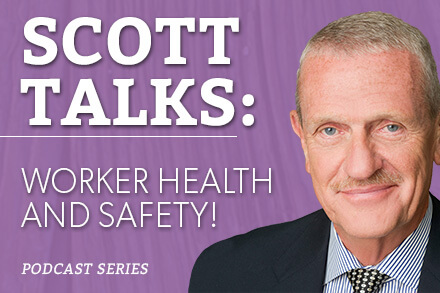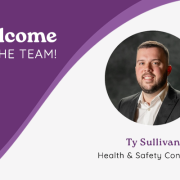In this episode of the podcast, learn about the common mistakes that companies make when establishing safety incentive programs in the workplace and how you can design a plan to effectively reduce injuries.
One of the things I want to talk about is incentive programs. A lot of companies try to implement incentive programs for safety performance, or for safe performance. And in a lot of cases the attempts are quite genuine, but they miss the mark. OSHA doesn’t really like companies implementing incentive programs because they’re of the opinion that an incentive program is to discourage employees from reporting injuries as opposed to what an incentive program should be: encouraging safe work practices.
So, it’s a tightrope that you need to walk because in a lot of companies if you don’t orient the program the right way from the get go, you’ll end up by default that people will not report injuries so they can get the gifts or rewards or incentives that you’re offering as opposed to actually working safer in the first place. Case in point, if you offer a certain trinket, whether it’s gift cards, or scratch tickets, or cash, or a lunch, if they can go a certain number of hours without a lost time injury, everybody will encourage anybody who has a lost time injury to not report it so that they can get the lunch, or a gift card, or whatever it is that they were going to reward.
We found this one of our customers about a decade ago, where they had something like 15 or 16 hernias in a very heavy manufacturing plant that were not reported because they wanted to get to that milestone because everybody got a gift card for a local clothing store. Those are not the ways incentives should be orchestrated to get people to perform safely. The goal is not to get them to hide injuries; it’s to have a good safety program where you’re trying to teach and educate people about safe work practices and safe behaviors so that then the incentive encourages those behaviors and doesn’t end up just encouraging them to not report accidents.
We find in a lot of cases you start off with very simple stuff. The awards or rewards aren’t necessarily based on accidents or injuries. It’s based on things like housekeeping, a hundred years ago when I started doing this, it was not uncommon to walk into a place, and find a company that would give out a good housekeeping award, where they would tour the plant and the safety committee would be the one that did it and you would have members of different departments inspect other departments, and you had a checklist and it was basically are all the tools in the right place, are the floors clean, are the aisles not blocked, are the eye washes and showers accessible, are the fire extinguishers in the right place, and are they charged, because those are expectable items that anybody can inspect, and you’re not relying on people to not report injuries or to act safely or unsafely.
The reward would be, whoever got the best score would get a banner, and typically it was a trophy, or literally a banner that hung on the wall, and in some cases company management would come down and serve pizza or ice cream or whatever, as a reward for having the best housekeeping. Go back to something I said earlier in the same behaviors that it takes to have good housekeeping, all the tools in the right place, right tool for the job, etc., are the same behaviors that make people think through their job and work safer in the first place.
So, the result of those good housekeeping inspections was that people got injured less often, but you weren’t tying the incentive to the lack of injuries or the reporting of injuries, you were tying it to the behaviors in terms of how they kept their workplace. What we find in companies where you start off with housekeeping as a goal and a lot of cases housekeeping is horrible–so, if you can work on that, and expand it from literally, clean floors, to tools in the right place, to then showers and eye washes, and then fire extinguishers, you build on that over time, so that then people get used to those inspectable items and then you can incorporate other things like, injury reporting, first aid injuries that happen on the job, near misses and you incorporate that into your overall safety program, but don’t necessarily tie the incentives to the lack of, or the number of injuries that you have.
It’s not uncommon when we go into some of the companies that we work for, where they don’t have a good injury record and they say my goal next year is to have zero injuries. That’s not necessarily an attainable goal. And so you have to be realistic when you set these goals in the first place, so that it’s achievable, or reasonably achievable, because you want your employees to have success so that they can build on that success, and do better the next year, and the next year, and the next year.
There’s no magic answer to this. There are tons of companies out there that will sell you incentive programs, catalogs that you can pick stuff out of, and points that you can accumulate. We don’t necessarily recommend them. We don’t necessarily say don’t use them. They can be used in a proper manner to incentivize good behavior towards not having accidents, but you shouldn’t necessarily use incentives when people don’t have accidents because they will not report them.
So, be judicious when you do it. OSHA doesn’t like incentive programs. We think they have a place, but they have to be used the way we’re talking about to incent good behavior, and not just be tied to accidents and injuries.





